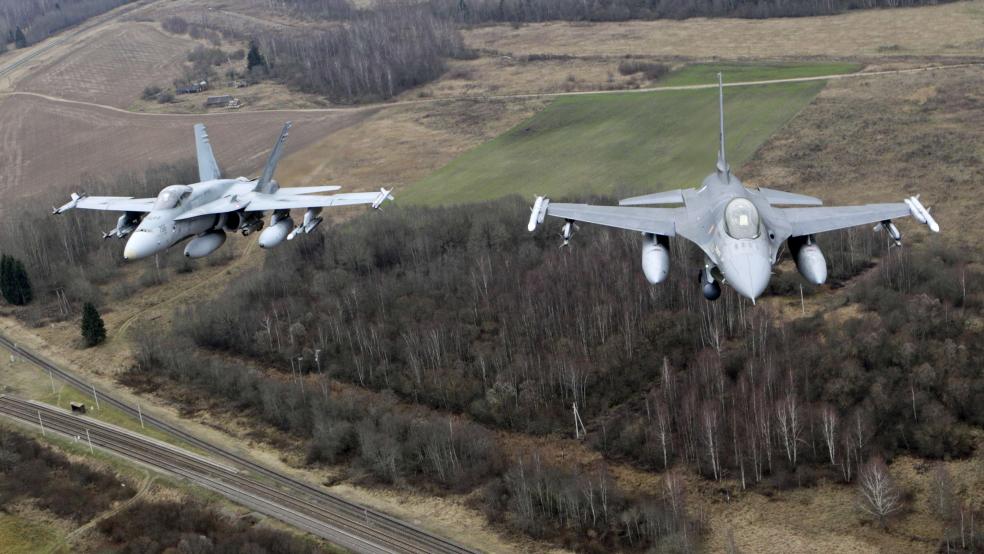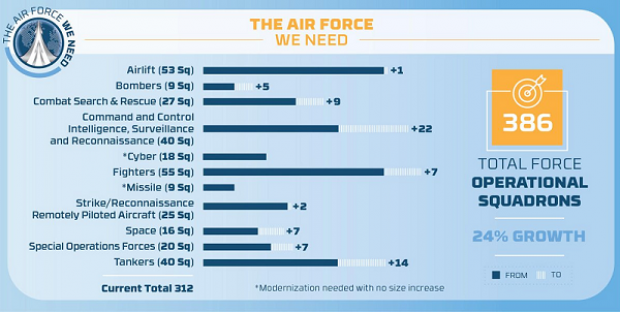The Air Force is 71 years old today, and its birthday wish list is a doozy. Saying that growing threats from China and Russia call for a substantial increase in U.S. air power, Air Force Secretary Heather Wilson said Monday that she would like to see 74 more squadrons deployed by 2030.
The current force structure of 312 squadrons is too small to meet even the current mission focused on counterterrorism in the Middle East, Wilson said at the Air Force Association’s Air, Space, Cyber Conference outside Washington. Moving forward, the Air Force will be expected to satisfy a more robust set of requirements — including defending the homeland, defeating a peer adversary, providing a nuclear deterrent, dealing with rogue nations and fighting extremists all over the world — that will require a substantially larger force, Wilson said. The massive military exercises recently held in Russia underscore the changing environment.
Adding 74 squadrons (each squadron typically has 12 to 24 aircraft) would require an additional 40,000 personnel, both military and civilian, Air Force spokeswoman Ann Stefanek said, leaving the Air Force with a headcount of about 725,000 by 2030, compared to the current projection of roughly 685,000.
Todd Harrison, a defense expert with the Center for Strategic and International Studies, said last week that adding 40,000 people to the Air Force payroll would cost about $5.2 billion a year based on current costs, and the increased operational costs would add another $13 billion per year. The cost of the additional aircraft could vary enormously depending on the mix, Harrison added.
While the proposal calls for seven more fighter squadrons, the largest increases would occur in units dedicated to command and control, intelligence, surveillance and reconnaissance; refueling; and combat search and rescue. The bomber fleet would also get a big boost, increasing by more than 50 percent from five to nine squadrons.
The Air Force provided this graphic with a summary of the proposed plan.





